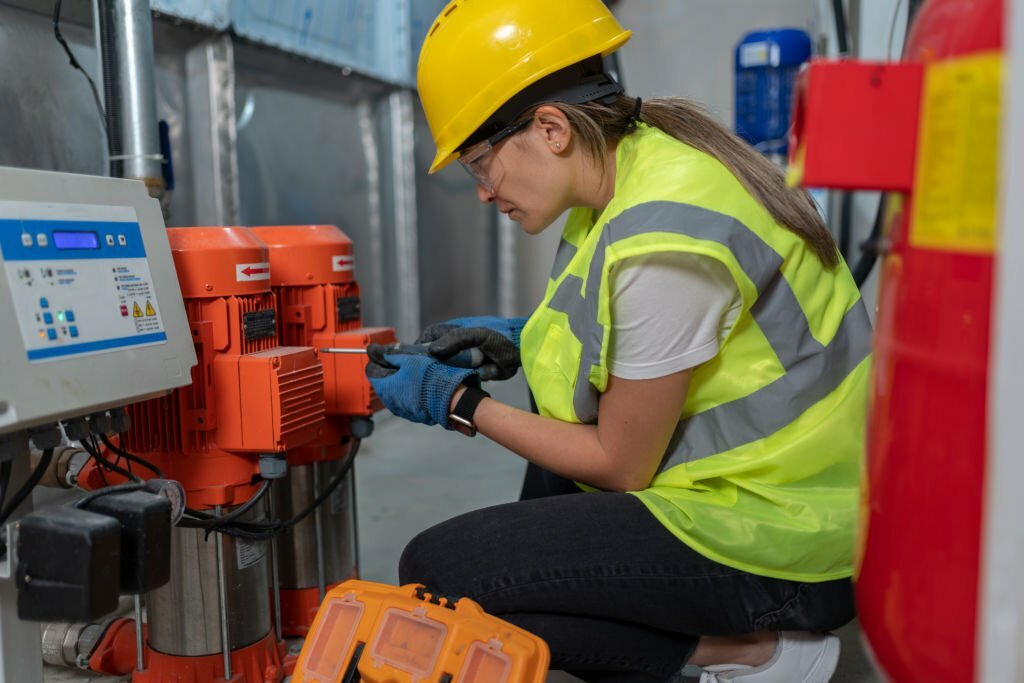Tips for Choosing the Right Water Tank Pumps for Your Property

Ever wondered why your neighbour’s water pressure is so much better than yours? Or perhaps you’re tired of inconsistent water flow whenever you turn on the garden hose? Maybe you’re considering installing a rainwater tank but feel overwhelmed by all the pump options available?
Selecting the right water tank pumps for your property can feel like navigating a maze of technical specifications and confusing jargon. Whether you’re looking to harvest rainwater, improve water pressure, or create a reliable water supply for your rural property, choosing the appropriate pump is vital for an efficient and cost-effective water system.
This guide will walk you through everything you need to know about water tank pumps. From understanding the basics to making your final purchase decision, we’ll explore pump types, calculate your water requirements, and help you avoid costly mistakes. By the end, you’ll have the confidence to select a pump that perfectly matches your property’s needs and budget.
Key Factors to Consider When Selecting Your Water Tank Pumps
Distance between tank and house
The distance between your water tank and house significantly impacts pump selection. Every metre of horizontal pipe run creates friction losses that your pump must overcome. These losses increase with flow rate, meaning a pump that works perfectly at 20 metres might struggle at 100 metres.
Pipe diameter becomes crucial over longer distances. Upgrading from 25mm to 32mm pipe can halve friction losses, potentially allowing a smaller, more economical pump. The initial cost of larger pipes often pays off through reduced pumping costs and better performance.
Elevation differences and head pressure
Understanding head pressure is crucial for proper pump selection. Total head includes static head (vertical distance) plus friction head (resistance from pipes and fittings). A pump lifting water 10 metres vertically while pushing it 50 metres horizontally faces very different demands than one pumping the same distances on level ground.
Calculate your static head from the lowest water level in your tank to the highest outlet in your house. Add approximately 5 metres of head for every 100 metres of horizontal pipe run, adjusting for pipe diameter. This total head figure determines the minimum pressure your pump must generate.
Power supply options: Mains vs solar-powered pumps
Most properties use mains-powered pumps for their reliability and consistent performance. Standard 240V pumps offer the widest selection and typically provide the best value for money. They’re ideal when you have reliable grid power and don’t mind ongoing electricity costs.
Solar-powered pumps have advanced significantly, offering genuine alternatives for suitable applications. Modern solar pumps with battery backup can provide reliable water supply even in overcast conditions. They’re particularly attractive for remote locations or where connection to mains power would be expensive.
Noise levels and installation location
Pump noise might not seem important until you’re trying to sleep with a pump cycling on and off nearby. External pumps can produce 60-80 decibels – comparable to a vacuum cleaner. Consider your pump’s location relative to bedrooms, entertaining areas, and neighbouring properties.
Submersible pumps solve noise issues by operating underwater, making them virtually silent. For external pumps, consider installing them in weatherproof enclosures that also provide sound dampening. Position pumps away from bedroom windows and outdoor living spaces where possible.
Understanding Water Tank Pumps
A water tank pumps is essentially the heart of your rainwater harvesting or water storage system. It’s a mechanical device that moves water from your storage tank to where you need it – whether that’s your kitchen tap, garden sprinkler, or washing machine. The pump creates pressure that pushes water through your pipes, overcoming gravity and friction to deliver a steady flow.
Different types of water tank pumps available
A complete pump system involves more than just the pump itself. The pressure tank or accumulator stores pressurised water, reducing how often your pump needs to start and stop. This extends pump life and provides instant water pressure when you open a tap.
- Submersible pumps vs external pumps: The choice between submersible and external pumps often comes down to your specific installation requirements. Submersible pumps offer several advantages: they’re virtually silent, don’t require priming, and stay cool naturally. Being submerged protects them from weather and reduces the risk of damage from debris or vandalism.
- Single-stage vs multi-stage pumps: Single-stage pumps use one impeller to generate pressure and flow. They’re simple, reliable, and cost-effective for most domestic applications. If your water needs are straightforward – supplying a single-storey home with modest pressure requirements – a quality single-stage pump will serve you well. Multi-stage pumps contain several impellers working in series, building pressure incrementally. They excel at delivering high pressure while maintaining energy efficiency. For properties with significant elevation changes or long pipe runs, multi-stage pumps provide the extra pressure needed without excessive power consumption.
- Variable speed pumps: Variable speed pumps represent a significant advancement in pump technology. Rather than operating at full speed whenever water is needed, they adjust their speed to match demand. Open one tap, and the pump runs slowly; open several, and it speeds up accordingly.
- Jet pumps for deep water applications: Jet pumps fill a specific niche in water pumping applications. They excel at lifting water from depths that would challenge conventional centrifugal pumps. Using a clever venturi design, they create suction that can draw water from wells or tanks positioned well below the pump location These pumps work by recirculating some pumped water back through a venturi nozzle, creating suction that draws more water up from the source. While this design sacrifices some efficiency, it enables water lifting from depths up to 7-8 metres – far beyond what standard pumps can achieve through suction alone.
Conclusion
Choosing the right water tank pumps for your property doesn’t have to be overwhelming. By understanding your water requirements, exploring available pump types, and considering key factors like distance, elevation, and power options, you’re well-equipped to make an informed decision. Remember that the perfect pump balances performance, efficiency, and reliability while meeting your specific needs.
The investment you make in a quality water tank pumps pay dividends through years of reliable service, efficient operation, and consistent water supply. Whether you’re harvesting rainwater for sustainability, improving pressure for comfort, or ensuring water security for your rural property, the right pump transforms your water system from adequate to exceptional. Take time to calculate properly, compare options thoroughly, and don’t hesitate to seek professional advice when needed.
Your water system is too important to compromise on – make your choice with confidence, knowing you’ve considered all the crucial factors. With the right pump properly installed and maintained, you’ll enjoy years of trouble-free operation and the peace of mind that comes from water independence. Here’s to better water pressure, lower running costs, and a system that serves your property perfectly for years to come!





